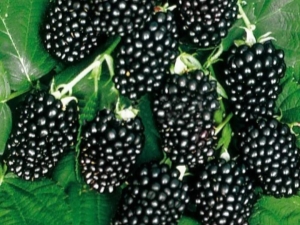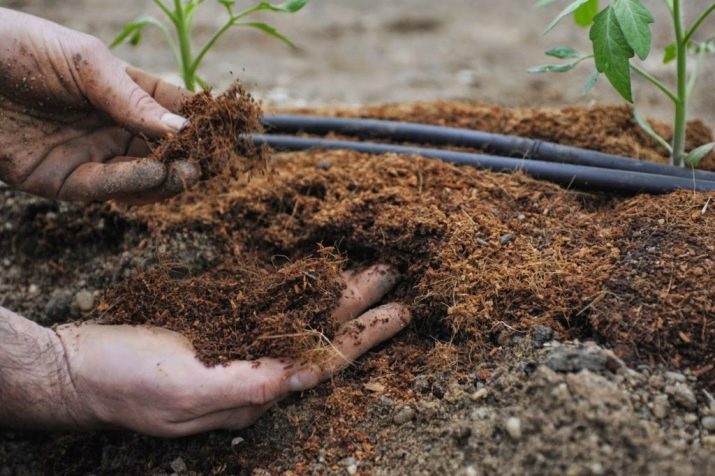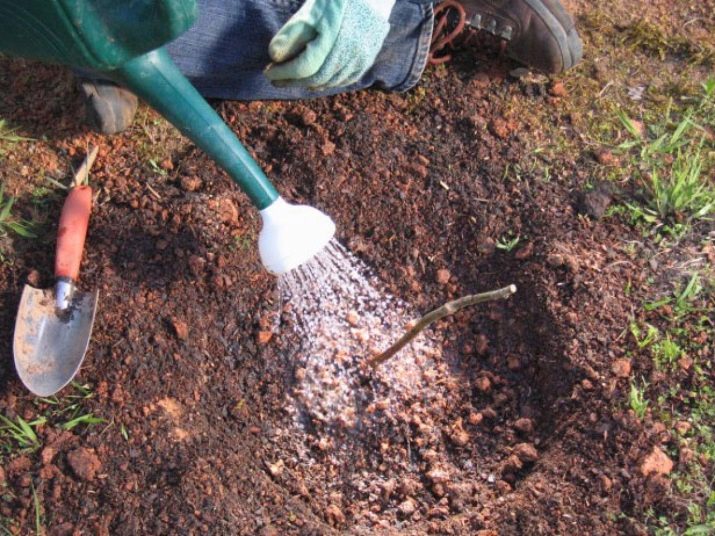Blackberry "Tornfrey": a description of the variety and the rules of cultivation

After the decision to engage in the cultivation of blackberry gardener must decide on the type of plant. Everybody wants a shrub to grow on their land, which gives a bountiful harvest of tasty berries, and does not cause inconvenience in growing. This is exactly the sort of “Tornfrey” variety, which most gardeners are happy with.
Variety description
Blackberry "Tornfrey" refers to the late-ripening dessert variety. Its berries are considered to be one of the most delicious of its kind. The bush of a plant is semi-detachable, has a rather powerful structure, reaches a height of at least three meters. Bearing blackberries are characterized by thick round-shaped shoots. There is no wax on the sides of the branches, but a slight pubescence is present. Berry bush foliage has a large size, dark green color. It is double-bladed, slightly pubescent.
Berries "Tornfri" large, black, have the correct oval shape. On the tasting scale, this variety has earned the highest marks, which is quite true. One copy of useful delicacy weighs about five grams. When the fruit is fully ripened, it turns into a matte, sweet and pleasantly smelling berries.
Ripe fruits become brittle and less dense, so the harvest is usually carried out at the stage of technical maturity. This variety of blackberry is high-yielding. If the plant is provided with full and proper care, as well as a sufficient amount of light and heat, then during the season one individual will bestow the gardener with twenty kilograms of fruit. The average yield per hectare of blackberry planting is 77.7 centners.
Preferential features of "Tornfrey":
- abundance of fruiting;
- large size and pleasant taste of berries;
- lack of thorns;
- good resistance to diseases and pests;
- significant frost resistance.
There are a few minuses in the variety:
- fruits have poor keeping quality and low transportable capabilities;
- not fully ripe berries outwardly practically do not differ from ripe ones;
- the shoots of the plants are difficult to bend, so they are difficult to bend down to create shelters.
The berries of this plant have a universal purpose. They are used for food freshly harvested, for blanks for the winter, drying and freezing.
Blackberry is a natural complex of micronutrients and vitamins. It contains sucrose, glucose, fructose, malic and salicylic acid.
Traditional medicine has found wide application in this culture. Fruits are used as a means of strengthening and saturating the body with vitamins. The foliage of this shrub has wound healing, anti-inflammatory and diuretic properties. Tincture of the plant treats inflammation of the gums. People who suffer from atherosclerosis, problems with blood formation, as well as digestive disorders, should eat the fruits of blackberry. Diarrhea, inflammation of the airways, pharyngitis, stomatitis, urolithiasis - all this can also be called the reasons for including blackberries in the diet.
Experts do not recommend eating the fruit "Tornfrey", if a person has a stomach disease, high acidity, kidney disease. There are cases when there was an individual intolerance to this product. Side effects after eating blackberries for some people may be vomiting, nausea, diarrhea, swelling of the mucous membranes.
Landing rules
The variety "Tornfrey" refers to the late ones, so the blackberry planting should be carried out in the spring time. Autumn planting leads to a weakening of seedlings that can die in the winter.
It is necessary to be engaged in preparation of a site and a trench in the fall. In preference for blackberry bushes sunny areas in which it is not too hot (high temperatures can lead to baking of fruits). But you should not choose a site where strong and cold winds penetrate, as this can lead to drying and freezing of shoots.
An ideal place for planting this variety is flat territory, which is protected from the north and north-west by fencing.
The best option is loamy, not acidified soil. If a site is chosen where the soil is sandy, then he will need to make good fertilizer, as well as digging in conjunction with black soil or clay. With the long absence of fertilizers on the territory in the autumn period, it is worth spreading manure, ash, compost around the site, and digging it up later.
Humus must be poured into the planting well, which is mixed with the ashes in advance. You can use complex fertilizers mixed with the soil. In the spring, when the time of planting comes, each of the cuttings should be shortened to twenty-five centimeters. Young blackberries need to be planted in the prepared hole. In this case, the root neck is deepened by three centimeters. Then you need to water the sapling.
The soil near the shrub needs to be filled with sawdust, dried grass or small dry branches. Thanks to mulching, we can prevent the weathering process of ground moisture, as well as slow down the growth of weed. The distance between the bushes of blackberry should be about three meters, as it is quite massive plants.
Care
Care for this blackberry variety includes standard activities:
- regular irrigation;
- weed control;
- top dressing;
- loosening the soil;
- the formation of the bush.
The bush is considered to be organic enough to fertilize. A good plant response is observed when humus, ash, and compost are introduced into the soil. To better form the ovary, you should fertilize the blackberry with urea, potassium complex and nitroammophoska.
To ensure good taste and a good taste of the crop, it is recommended to mulch the soil under Tornfri. For this purpose it is worth using agrofibres, raw materials from plants, cardboard scraps.
With intensive fruit ripening, the plant especially needs abundant irrigation. It is necessary to water blackberries well in hot and dry summers. But it is worth remembering that an excessive amount of moisture contributes to putrefactive processes in the root system. It will be enough to irrigate once every seven days, pouring about twenty liters of water under one individual. Need to water the bush or not, you can understand how mulch. If it is wet, then water the plant should not.
Shrub formation
According to experts, for high yields and normal plant life, it is necessary to form a shrub and remove those branches that have not yielded fruit in the current season. To form a fan-type shrub, branches with normal fruit bearing must be woven, laying them on top of each other. During this process, newly formed shoots should be left in free growth, but at the same time, one should not forget to arrange them in the same direction.
Pruning "Tornfrey" implies shortening the length of the shoots with a secateur. This procedure leads to the activation of the growth of the lateral type of stems, but in the future they are also cut.
Frost resistance of this sort of blackberry is up to minus twenty degrees Celsius. This is the reason for hiding the plant for the winter, no matter where in the country the bush grows. It is not recommended to use the film for blackberry insulation. It is better to give preference to the following materials:
- straw;
- lapnik;
- agrofibre;
- slate;
- insulation mats.
Thornfrey needs to pick up a bush and fasten it to a trellis. When conducting a one-sided garter, new and last year’s branches are divorced in different directions.
Diseases and pests
With proper planting and the observance of the necessary measures related to the care of blackberries, you can reduce the risk of disease and pest attacks. In the neighborhood of "Tornfrey" with a raspberry bush, it is worthwhile to establish a distance of at least one hundred meters between the plants.Often, raspberry brings a hidden form of green mosaic, which is destructive for blackberry.
Blackberry varieties "Torfri" resistant to anthracnose, rust, stem stem. But if there are signs of damage by these diseases, it is worth using biofungicides immediately.
If a gall mite attacked the plant, then the berries lack the ability to ripen, and they remain red. This parasite is of small size and provides wintering on the bushes, later moving on to flowers, and then to berries. As a preventive measure in the autumn season, it is necessary to cut out the old stems.
Effective will be the spring treatment of plants by spraying a strong infusion of garlic.
Breeding features
For seating BlackBerry Tornfri, you can use one of three ways:
- green cutting;
- root layering;
- apical rooting.
Reproduction using green cuttings contributes to the preparation of a large amount of material for planting. This option is suitable for people who are engaged in the cultivation of berries for trade or want to create a live fence from "Tornfri".
In summer, the lateral branches must be cut by cuttings, to remove leaves from the sinuses. It should not be forgotten that the top bud should be left. All cuttings must be planted in the ground feed so that they take root. Usually about seventy percent of planting material takes root.
The method of reproduction using root cuttings is not more difficult than the previous one, but there will be less material for planting. This method involves leaving several powerful layers around the maternal individual. They will need to take care of in the summer, and in the autumn will need to carry out a transplant. In order to avoid exhaustion of the mother bush, the layering is deposited. In the springtime, there is a small survival rate of individuals that are not strong.
Using apical rooting gives one hundred percent guarantee that the plant will take root (provided proper care). During the procedure, tall shrubs are bent to the ground and rooted. In this case, the shoot must be buried in the soil so that the top of the head remains outside.
Throughout the season it is necessary to water the young plant plentifully, fertilize and loosen the soil. In the autumn, after harvest, when the young individuals get stronger and grow, the blackberry should be separated and transplanted.
Reviews
Growing this variety of berry bush does not create difficulties and troubles for the owner of the site. In the feedback, gardeners note that they are pleased with the abundant yields of Tornfrey blackberry. You can collect tasty and healthy berries even with minimal care. Also, gardeners say that no matter what method of reproduction is chosen, the plant takes root well.
The disadvantages in growing blackberries are only the installation of the trellis, the garter and the need for shelter for the winter. But all these minor drawbacks are easily compensated by the high resistance of the plant to disease. The bush rarely gets sick and is attacked by pests.
Each year, breeders bring new promising blackberry varieties. But despite this, "Tornfri" remains a popular and sought-after plant in many gardens of Russia. This culture is grown for both personal and industrial purposes. Due to the mass of positive characteristics, the variety easily passes its competitors.
For more information about the reproduction of blackberry "Tornfri" see the following video.

































